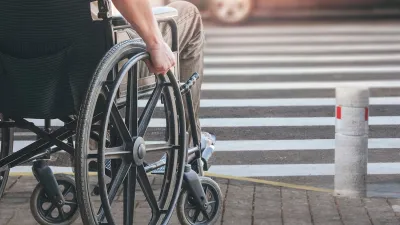How the Covid-19 pandemic taught us new ways to reclaim city streets from cars.

A new book from David L. Prytherch highlights the rapid changes made to city streets during the Covid-19 pandemic and how cities and public space advocates can build on pandemic-era success to transform American streets from vehicular thoroughfares to vibrant urban spaces. Next City published an excerpt.
Prytherch notes that, during the same time period, Americans became painfully aware of the inequity that makes even ‘open’ streets less accessible and safe for some people than others. “Though immediately focused on policing, this growing conversation encompassed a broader range of equity issues, accelerating an already robust movement for mobility justice looking beyond equity among modes to address social issues beyond the public right-of-way.”
By inviting a diversifying set of people to enter and have a stake in the roadway, and interpreting mobility justice more broadly than simply multimodal access, we come face to face with profound questions. What, exactly, do we mean by mobility justice? What and whom should public streets be for? And how ought they be shared equitably?
Prytherch explains how planners and activists must reconcile intersecting and sometimes conflicting values as they work to reclaim streets from cars and preserve the spaces created during the pandemic. “Planners struggle to balance neighborhood input, which tends to privilege the already privileged, with data-driven spatial justice. Nonetheless, these efforts to reclaim streets better approximate mobility justice than the galling inequities and unsustainability of the car-centered status quo.”
FULL STORY: Reclaiming Our Roads From Cars

Planetizen Federal Action Tracker
A weekly monitor of how Trump’s orders and actions are impacting planners and planning in America.

Maui's Vacation Rental Debate Turns Ugly
Verbal attacks, misinformation campaigns and fistfights plague a high-stakes debate to convert thousands of vacation rentals into long-term housing.

San Francisco Suspends Traffic Calming Amidst Record Deaths
Citing “a challenging fiscal landscape,” the city will cease the program on the heels of 42 traffic deaths, including 24 pedestrians.

Defunct Pittsburgh Power Plant to Become Residential Tower
A decommissioned steam heat plant will be redeveloped into almost 100 affordable housing units.

Trump Prompts Restructuring of Transportation Research Board in “Unprecedented Overreach”
The TRB has eliminated more than half of its committees including those focused on climate, equity, and cities.

Amtrak Rolls Out New Orleans to Alabama “Mardi Gras” Train
The new service will operate morning and evening departures between Mobile and New Orleans.
Urban Design for Planners 1: Software Tools
This six-course series explores essential urban design concepts using open source software and equips planners with the tools they need to participate fully in the urban design process.
Planning for Universal Design
Learn the tools for implementing Universal Design in planning regulations.
Heyer Gruel & Associates PA
JM Goldson LLC
Custer County Colorado
City of Camden Redevelopment Agency
City of Astoria
Transportation Research & Education Center (TREC) at Portland State University
Jefferson Parish Government
Camden Redevelopment Agency
City of Claremont





























